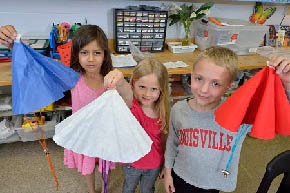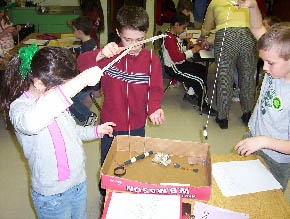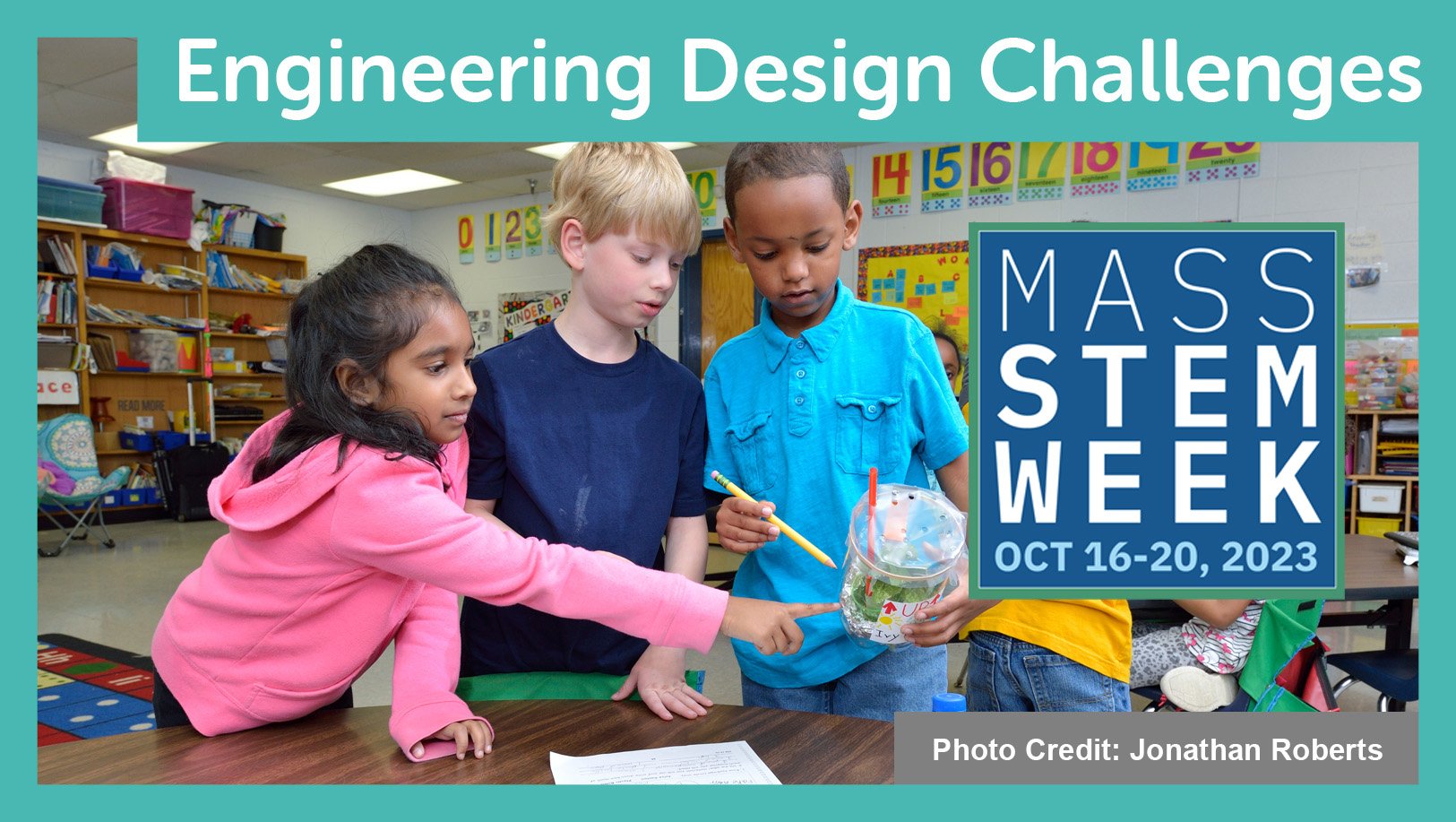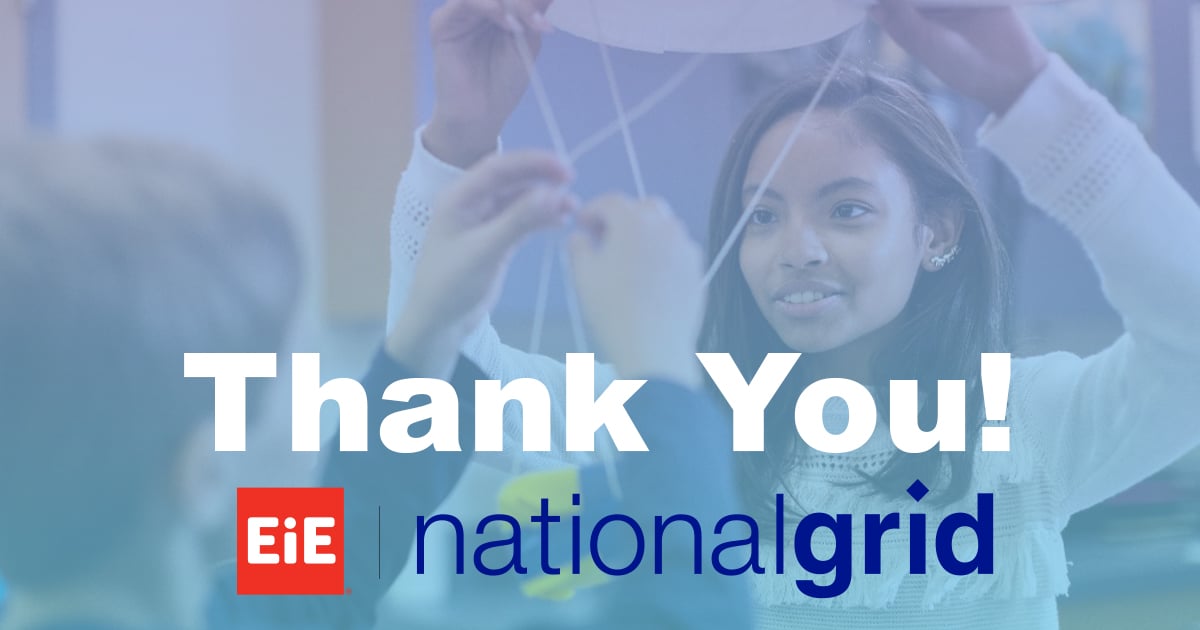 |
| These students designed parachutes to land a space rover on another planet! |
Check last month's education news and you'll notice third graders at a school in Cleveland designed a restaurant, middle schoolers in Cincinnati were tending beehives, and sixth graders in Michigan strategized about how to protect Earth from the damaging effects of solar flares. These somewhat offbeat activities are part of a wider trend to make project-based learning a fundamental aspect of the school day.
What does project-based learning mean for your teaching practice? This approach DOES, as the name suggests, involve kids in hands-on projects. But it's more than just asking students to draw a poster, put together a PowerPoint, or build a model.
Five Critical Components of Project-Based Learning
Project-based learning involves these key components:
- Students identify a real-world problem and work to find a solution
- The problem is meaningful to students—it has a connection to their real-life experiences, and they feel that it matters
- The project is framed by a story that helps to communicate the content students will learn
- Students work in groups and actively collaborate
- At the end of the project work, students present their findings rather than simply taking a test
"Why Do I Need to Learn This?"
 |
| It's fun to explore the properties of magnets-but why is this knowledge important? |
The Engineering is Elementary curriculum is built around project-based learning. Here's how it works:
Let's imagine that state science standards call for your students to learn about the properties of magnets. A typical science lesson aimed at meeting these standards engages students in testing household items to see which are attracted to magnets, and whether magnetic fields are blocked by paper or other materials.
These activities are reasonably fun for kids. But student might wonder, "Why do I need to learn this?" Especially if their only experience of magnets is holding up notes on the refrigerator.
Stories Provide a Real-World Framework
Now consider the EiE unit "The Attraction is Obvious: Designing Maglev Systems." Students start by reading a storybook about a boy in Japan whose parents own an independent toy shop that's threatened by the success of a new chain store. After learning about Japan's high-speed maglev (magnetic levitation) trains, the boy designs a model maglev system and installs it in his parents' shop, attracting customers with this novelty.
Now the topic of magnetism is framed by real-world events (maglev trains are being considered as a transportation solution in the United States, too), and also by a scenario where a child makes a difference.
| The EiE Video Snippet: Let's Brainstorm Some of the Questions You Have Full-screen version here. |
The students go on to design, test, and improve their own model maglev systems. The EiE Video Snippet "Let's Brainstorm Some of the Questions You Have" shows a skillful teacher introducing the design challenge. Notice how, instead of telling students how the design challenge will work, she steps back and asks students to share their questions. Watch how one student connects what he has learned about the properties of magnets to the project at hand.
Sharing and Caring
| The EiE Video Snippet: We Made It! Full-screen version here. |
The educator John Dewey, who famously advocated for learning by doing (the essence of project-based learning), once said, "We do not learn from experience, we learn from reflecting on experience." EiE units are designed with multiple points where students pause, reflect, and share. They're motivated to remember the properties of magnets not because "it will be on the test" or "you'll need to know this when you grow up," but because they become deeply invested in the outcome of their project.
Watch the EiE Video Snippet "We Made It" to see highly engaged students who are actively applying their science knowledge to solve a problem.
What the Research Says
It may feel challenging to contemplate teaching a project-based lesson, especially when you feel pressured to "get through" a certain amount of content and prepare students for tests. But studies of project-based learning find that it accommodates diverse learning strategies—students learn effectively, they learn across subject matter areas, they remember what they learn, and they retain it longer.
Students also develop the 21st century skills they will need in adult life such as critical thinking, problem solving, collaboration, and especially communication—including speaking and presentation skills. Finally, project-based learning is simply enjoyable for kids. It makes school more engaging.
Project-based learning does require a shift away from teacher-centered instruction and toward being a skillful facilitator who models thinking strategies for students. But research also shows that project-based learning is more enjoyable for teachers. More engaged students and a more enjoyable school day . . . who wouldn't want that?
This post was originally published on March 1, 2016. It has been carefully reviewed for accuracy and up-to-date information.
Engineering is Elementary is a project of the National Center for Technological Literacy® at the Museum of Science, Boston.








